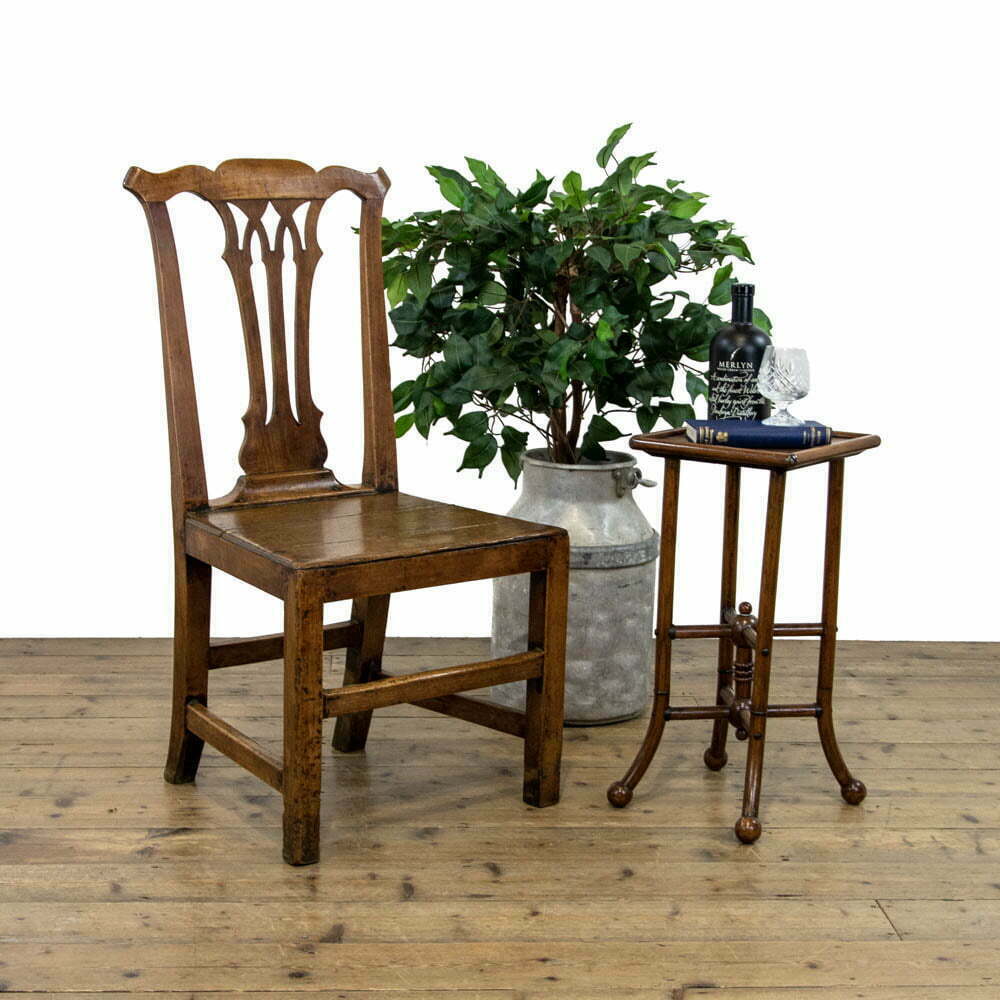Antique Chairs Through The Eras
In this blog, we will be examining antique chairs and the general development of chairs in Britain over the past three centuries starting in the Georgian era to Victorian and finally the 20th Century.
Georgian Antique Chairs
We begin with the Georgian era, during which time the furniture was not machine-cut, meaning that imperfections in the joinery and overall structure were commonplace. Most antique chairs from this period were constructed from oak as one of the most readily available materials. Later in the period, walnut and mahogany became increasingly popular.
Due to the cost of importing such materials, pieces made from these woods were usually owned by the entrepreneurial or upper classes. These tend to be more decorative than their oak counterparts, as they tended to be created by more highly skilled craftsmen. Such craftsmen include the designers Thomas Chippendale and George Hepplewhite whose work was greatly influential. Hepplewhite and Chippendale chairs today sell for vast sums, but pieces inspired by their designs are affordable and readily available.
Chippendale style chairs draw on both Rococo and Gothic style and are characterized by a number of key characteristics: S-curves, gothic style arches and Queen Anne cabriole legs. Chippendale harmoniously blended these very distinctive elements into rich and ornate styles. Hepplewhite, meanwhile, created some of the most recognisable pieces of furniture that are still popular today such as the shield back chair.

One example of a more decorative style of Georgian antique chairs.
Victorian Antique Chairs
The Victorian era was a time of great change in the furniture-making industry. The introduction of machine-cut pieces (with the first wood-carving machine being produced in 1845) meant that furniture could be produced on a huge scale and to precise measurements. This mass production meant more decorative chairs were readily available to the public and Rococo revival was the fashion of the day.
In response to this came the Arts and Crafts movement that produced unpretentious yet dignified woodcraft proudly spoke for itself in the face of flowery Victorian inlays and excessive patterns, and pieces were built with longevity in mind, rather than fashion.
In 1865, many years before he published the aforementioned book, Morris introduced the first version of the recliner. It exhibited the lines and leather upholstery that would later be associated with Mission furniture made in America.
Much like the latter part of the Georgian era, mahogany was still a premiere choice of the wood industry. But, by this time, upholstered pieces became increasingly common and would become a prominent feature of quality chairs of the time. Pioneers and technological innovations opened opportunities to improve most if not all facets of the manufacturing process. The end product was a more intricately designed and decorative series of chairs.
This period also saw the creation of tete-a-tetes and gossip benches. These held a more social function. Tete-a-tetes had a more serpentine appearance and were suited for two or more people to sit down close to each other. Gossip benches also grew immensely in popularity following the invention of the telephone back in 1876. These were a sofa and chair hybrid with a side table attached. Popularity of these pieces peaked in the 20th Century with many reproductions of Victorian styles.
20th Century Antique Chairs
The 20th Century saw the advent of the Art Deco style. Characteristics of the Art Deco style originated in France in the 1910s and matured into a major style in the 1930s. Characterised by geometric shapes and details, art deco furniture is often vibrant in its colour palette and manufactured from exotic woods.
Further developments in the mechanisation of the furniture making industry saw a greater number of pieces available to the mass market. Stylish furniture that would have once been accessible only to the wealthy appeared in homes of all sorts around the country. The great depression led to a brief window of more simplistic, traditional concepts entering the market. This was mirrored in the styles found towards the latter part of the Century, with furniture by the likes of Ercol growing in popularity. Their sleek, simplistic features and functionality have granted them an enduring appeal.

Antique chairs are available in a variety of styles and materials, like this leather gentleman’s tub chair.
Final Thoughts
Altogether, there is not much to say about whether different types of antique chairs have fallen in and out of fashion. Overall, chairs are an essential element to achieving certain styles in a room (older, farmhouse chairs for that rustic appearance, and more retro Ercol chairs for a contemporary look). Moreover, chairs are a notable feature of every home, and because they have been for so long, antique chairs may be one of the most abundant forms of antique furniture on the market. So, if you ever feel you might want to buy something with historical value, there will be options for antique chairs available to you.
To keep up to date with our latest content and news, be sure to subscribe to our newsletter. We will send the latest business updates, exclusive discounts and much more straight to your email! If you’d like more interior inspiration check out our Instagram!

